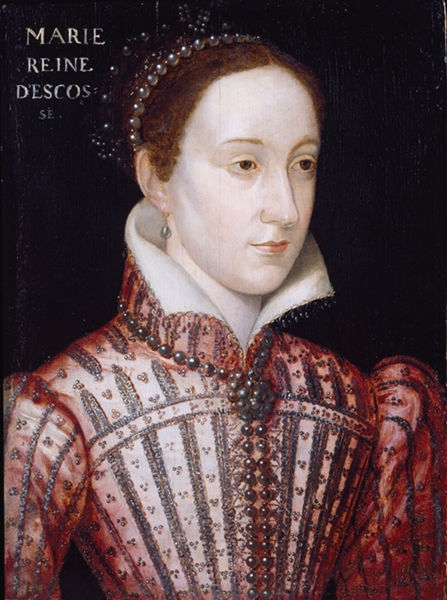Mary Queen of Scots was born in Scotland in the year1542. She was widely acknowledged to be a great beauty and she was also tall for a woman of those times, being close to 6 feet. Mary had auburn hair and hazel eyes and she was also said to have a very kind and loving nature.
Her father, who was King James V of Scotland, was also the nephew of King Henry VIII of England. And her mother was a member of the rich and powerful Guise family of France.
Becoming a Queen at six days old, when her father died, was just the beginning of a very eventful life for Mary, as at the age of six years, she was sent to France due to the religious turmoil between Catholics and Protestants erupting in Scotland.
 |
| Mary, Queen of Scots (1542-1587) |
King Henry II of France wanted Mary to marry his son, the weak and sickly Dauphin Francis. And they did eventually marry when Mary was 15 and the Dauphin was 14.
Mary's mother in law was the ruthless Catherine de 'Medici, who was known to poison her enemies and said to dabble in a bit of witchcraft. So Mary, was lucky in a way, as she was merely sent back to Scotland when her husband Francis II died.
Back in Scotland, Mary fell in love with Henry, Lord Darnley, describing him as "the lustiest and best-proportioned lang man". The pair married in 1564. However, the marriage quickly turned sour.
Not long before Mary gave birth to her child, who would later become James VI of Scotland and Ist of England, Lord Darnley, in a fit of jealously killed Mary's private secretary, Italian musician David Rizzio, by stabbing, right in front of the heavily pregnant Mary.
Mary's husband Lord Darnley died (murdered) and she fell in love again, this time with the Earl of Bothwell, who was soon revealed as the assassin of Mary's former husband, Lord Darnley, by means of an explosion. Mary and Bothwell, to the utter outrage of many, married.
Her reputation in shreds, combined with the growing power of the Protestants, resulted in Mary abdicating. She was locked away in prison, but after a year, her supporters helped her to escape, and she attempted to flee to France. Her ship, however, blew off course and she landed in England. Mary was now at the mercy of her cousin, Queen Elizabeth I.
Imprisoned Again
Again, Mary was imprisoned. She tried to escape and she was put under closer guard. In 1587, Mary's Catholic supporters tried to assassinate Elizabeth I, in order to put Mary on the throne and reinstate Catholicism. Instead, this led to Elizabeth I signing Mary's execution warrant.
Dressed in scarlet, the colour of martyrdom, Mary was led to the scaffold, which had been erected in the middle of a large room. Mary asked her major-domo to assist her up onto the scaffold and she asked to see a Catholic priest. This request was refused and the Duke of Kent added, “he pitied her greatly to see her thus the victim of the superstition of past ages”.
Attempts were made to remove her black veil, but Mary angrily pushed all hands away. The first blow of the axe struck the back of her head. The next blow severed the neck, leaving a small amount of sinew. The executioner then cut through this with the axe.
 |
| The execution of Mary, Queen of Scots |
Books To Read
The Monarchy of England: The Beginnings, by David Starkey